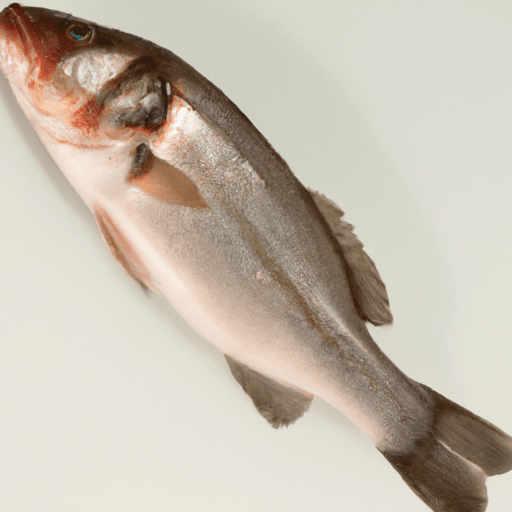Exploring the Flavors of European Sea Bass
If you’re a seafood lover, European sea bass is a delightful ingredient to have in your culinary repertoire. Also known as Dicentrarchus labrax, this fish is prized for its delicate flavor, versatile uses, and impressive nutritional profile. Join us as we dive into the world of the European sea bass and explore its tantalizing taste and fascinating characteristics.
Taste and Texture
European sea bass boasts a mild and subtly sweet flavor that is often compared to that of red snapper or striped bass. Its white, flaky flesh has a firm yet tender texture, making it an absolute pleasure to enjoy. When cooked correctly, the sea bass has a melt-in-your-mouth quality that is difficult to resist. Its natural flavors are complemented by a hint of brininess, which adds to its overall appeal.
Common Uses in Cooking
Thanks to its versatility and delicate flavor, the European sea bass lends itself well to a variety of cooking methods. Here are some popular ways to prepare and enjoy this delicious fish:
1. Grilling: The sea bass is a superstar on the grill. Its firm flesh holds up beautifully, and the high heat imparts a smoky, charred flavor that perfectly complements its natural sweetness.
2. Pan-Searing: Searing the sea bass in a hot skillet creates a crispy skin while maintaining the moistness of the flesh. The combination of texture and flavor makes this a go-to cooking method.
3. Baking: Baking the sea bass is a foolproof way to achieve a tender and succulent result. Whether you opt for a simple lemon and herb infusion or a more elaborate stuffed preparation, the oven helps to retain moisture and amplify the fish’s delicate taste.
4. Steaming: Steaming is a gentle yet effective method to cook sea bass, ensuring that it remains moist and full of flavor. Infuse the steaming liquid with aromatic herbs and spices to enhance the taste.
5. Raw Preparations: With its supreme quality and taste, sea bass is often enjoyed in raw or lightly cured dishes. Served as sashimi or in ceviche, its fresh flavor truly shines.
Nutritional Value
Beyond its tantalizing taste, the European sea bass brings a plethora of health benefits to the table. Packed with essential nutrients, it makes for a smart addition to a well-rounded diet. Some key nutritional highlights include:
- Protein: Sea bass is an excellent source of protein, which plays a vital role in muscle growth, repair, and overall wellbeing.
- Omega-3 Fatty Acids: This fish is rich in omega-3 fatty acids, which are known to support heart health, reduce inflammation, and promote brain function.
- Vitamins and Minerals: European sea bass is a good source of vitamins B6, B12, and D, as well as minerals like selenium, magnesium, and potassium.
History and Fun Facts
European sea bass has a rich culinary history that dates back centuries. Here are a few intriguing facts to pique your interest:
- The sea bass is highly regarded in Mediterranean cuisine, particularly in countries such as France, Spain, and Greece.
- In ancient Rome, sea bass was considered a luxury ingredient and was highly sought after by emperors and elites.
- The European sea bass is a predatory fish, known to feed on smaller fish and crustaceans. Its distinctive hunting techniques make it an interesting species to observe.
Whether you’re a seasoned seafood enthusiast or just exploring new flavors, the European sea bass is a culinary gem that deserves your attention. Its delicate taste, versatility, and impressive nutritional profile make it an excellent addition to any recipe. So why not embark on a gastronomic adventure and indulge in the pleasures of cooking with European sea bass? Your taste buds will thank you!
European Sea Bass
Origin: The European sea bass, also known as Dicentrarchus labrax, is a popular fish species native to the waters of the eastern Atlantic Ocean and the Mediterranean Sea. It is widely distributed along the European coastlines, ranging from Norway to Africa.
Common Uses: European sea bass is highly regarded for its delicate and flaky texture, mild flavor, and versatility in cooking. It can be prepared in various ways, including grilling, baking, steaming, or pan-frying. The firm flesh of sea bass makes it suitable for whole-roasting or filleting for individual servings.
Nutritional Benefits: European sea bass is not only delicious but also offers several nutritional benefits. It is a good source of high-quality protein and contains essential omega-3 fatty acids, which are beneficial for heart health and reducing inflammation in the body. Additionally, it provides essential vitamins and minerals, including vitamins B6 and B12, selenium, and potassium.
Unique Properties: One interesting fact about the European sea bass is its ability to adapt to different salinities. They are euryhaline, meaning they can tolerate a wide range of salinities, from fully marine to slightly brackish waters. This adaptability allows the species to inhabit estuaries and lagoons as well as rocky shorelines.
Historical Significance: European sea bass holds historical significance, especially in European cuisines. It has been consumed since ancient times and valued by civilizations such as the Greeks and Romans. In ancient Rome, sea bass was considered a luxury fish and was popularly served at elaborate banquets. Its cultural significance is still evident in traditional Mediterranean dishes today.




Use the share button below if you liked it.
It makes me smile, when I see it.